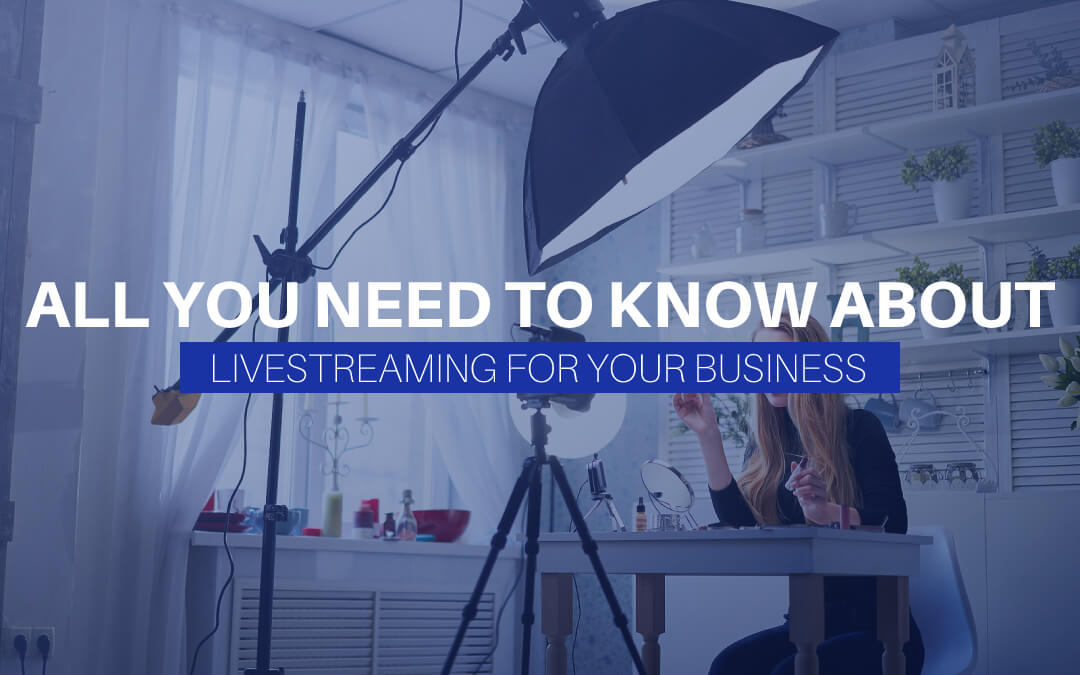In a time where large physical gatherings are strongly discouraged, and social distancing threatens to overtake the other ‘social’ (we mean social media, of course), brands have been struggling to find new ways to connect with their audiences. One technological avenue that has been here for a while – but greatly under-utilised until the pandemic – has now become many businesses’ new go-to. That’s none other than live-streaming.
Never before have companies seen such a mad scramble to figure out the workings of Facebook live, Instagram live, Zoom webinars, finding the right gear and setup, brainstorming suitable content ideas, and more. If you’ve found yourself caught up in this whole new world of live-streaming, with little idea of where to start, you’re in luck. We’re here to help!
Type of livestream productions
First, let’s take a look at what type of content brands gravitate towards for livestreams. Depending on the nature of your business, the type of content that suits your brand will also differ. If in doubt, don’t hesitate to enlist our help in advising you on the best direction to go!
- Product demos
Product demos are great for B2C or B2B marketing. While video product demos are not a new thing, livestreaming them offers added potential for connecting with your audience. Customers or business clients can clarify their queries through the real-time chatbox, and the host can answer them directly.
Product demos don’t have to be all stale and boring, either. Some ideas to freshen it up are by having fun personalities to review the product, or interview the creator about the product. Especially for B2C marketing, having an entertainment aspect should be a priority to attract more audiences.
- Webinars
Webinars are more suited towards the B2B side of marketing, for the reason that it is more informative and exclusive. Through webinars, companies can offer deeper insights into the industry, their products, and services, in a very focused way for their audiences. Often, there is a small number of speakers or panellists, with the possibility of accommodating a large number of attendees.
While webinars tend to be on the more serious side of things, the key to attracting audiences is by curating very relevant topics that potential business clients actually want to know about. Topics touching on pertinent problems and business solutions are the way to go for webinars.
- Internal correspondence
Company-wide events like huge announcements, team bonding events, workshops, and awards days can also make use of live-streaming platforms to involve everyone while keeping the company and its staff safe. While some may argue you can do away with these altogether, or replace them by e-mail correspondence, the advantages of being able to see your co-workers face-to-face, albeit virtually, still trump text.
Corporate live-streams have the benefit of bringing employees together, maintaining a sense of closeness and normalcy despite not being physically in the same space. Depending on the event type, these may be rather casual events or formal announcements – but typically, everyone can get involved by showing their face and having an opportunity to speak.
How to host your own live-stream
Technically, hosting a live-stream is easy. All you need is a video-hosting platform, internet connection, and you’re good to go. That said, it is always a good idea to test out the streaming platform ahead of time to get familiar with its workings. For informal internal correspondences, DIY live-streaming is a budget-friendly solution.
However, organising a hitch-free and professional live-stream is easier said than done. When you need to make a good impression on business clients, or attract customers with an impeccable brand image, there is no room for mistakes.
You are better off engaging professional help for your live-stream if you are particular about streaming quality. Professional live-streaming production teams can provide better audio and video gear, servers, and even on-site moderators so that your virtual event goes smoothly without a hiccup.
Additionally, professional live-streams give you more options when it comes to the setup of your video. Rather than relying on the mediocre quality of your laptop’s built-in webcam, you can enjoy high-definition visuals from pro cameras. Here are some other filming considerations you may want to take into account when planning your livestream:
- Camera setup
A single camera setup is the easiest to execute, but it can get stale for the audience to watch a video from the same angle throughout a long livestream. Especially for long livestreams, or livestreams at large venues, a multi-camera setup is ideal to provide more visual interest. Multi-angle filming is also recommended for product demos to accommodate close-up views as well as views of the presenter.
- Lighting
Don’t have the luxury of a well-lit space? Pro lighting can make a huge difference in making your videos look polished. On a practical note, it also helps your audience take in the details of your livestream better, and sustains their attention for longer.
- Sound quality
People sometimes forget that audio is also part of video! When cameras are placed ideally to capture visuals, they are often too far away to clearly capture the audio from persons speaking. Unless capturing ambient noise is part of your video, it will benefit your livestream to have some clip-on mics or table mics to pick up clearer speech audio.
Conclusion
It looks like live-streaming is the way forward for organisations looking to engage with their clients and collaborators. Don’t wait any longer to jump on the bandwagon – if you need any help setting up your live-stream event, do consider engaging a video production company to assist you. Here at Gram, we provide comprehensive services in live-streaming and corporate video production so you can focus on bringing out the best of your company on screen.



